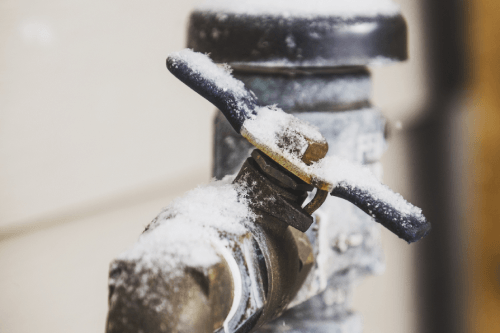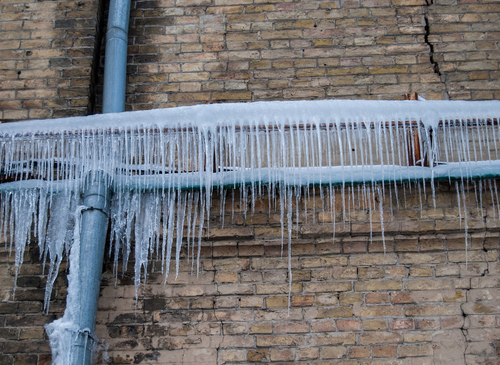Safeguarding Your Pipes from Cold Weather Damage: Key Strategies
Safeguarding Your Pipes from Cold Weather Damage: Key Strategies
Blog Article
What're your thoughts on How To Avoid Freezing Pipes?

Winter can damage your pipes, especially by freezing pipelines. Right here's exactly how to avoid it from occurring and what to do if it does.
Introduction
As temperatures drop, the danger of frozen pipelines boosts, potentially resulting in expensive fixings and water damages. Understanding just how to prevent icy pipes is crucial for home owners in cold environments.
Comprehending Icy Pipes
What triggers pipelines to freeze?
Pipes freeze when subjected to temperature levels listed below 32 ° F (0 ° C) for expanded periods. As water inside the pipes freezes, it expands, putting pressure on the pipeline walls and potentially creating them to break.
Risks and damages
Icy pipelines can bring about water disturbances, residential property damage, and pricey fixings. Ruptured pipelines can flooding homes and trigger substantial structural damage.
Indicators of Frozen Piping
Recognizing icy pipes early can stop them from rupturing.
Exactly how to identify icy pipelines
Try to find decreased water circulation from faucets, unusual smells or sounds from pipes, and noticeable frost on revealed pipelines.
Avoidance Tips
Shielding susceptible pipelines
Wrap pipelines in insulation sleeves or use warm tape to protect them from freezing temperatures. Focus on pipelines in unheated or outside locations of the home.
Home heating methods
Maintain indoor rooms adequately warmed, particularly areas with plumbing. Open up cabinet doors to permit cozy air to distribute around pipelines under sinks.
Safeguarding Outdoor Pipes
Yard tubes and outdoor faucets
Disconnect and drain pipes garden hoses prior to winter. Mount frost-proof faucets or cover exterior faucets with insulated caps.
What to Do If Your Pipes Freeze
Immediate activities to take
If you think frozen pipes, keep taps open up to relieve stress as the ice thaws. Make use of a hairdryer or towels soaked in warm water to thaw pipelines slowly.
Long-Term Solutions
Architectural adjustments
Take into consideration rerouting pipelines away from exterior wall surfaces or unheated locations. Add added insulation to attic rooms, basements, and crawl spaces.
Upgrading insulation
Buy top notch insulation for pipelines, attic rooms, and wall surfaces. Proper insulation helps maintain constant temperatures and decreases the danger of frozen pipes.
Conclusion
Preventing frozen pipelines requires proactive procedures and quick actions. By understanding the causes, indications, and preventive measures, home owners can shield their pipes during winter.
6 Proven Ways to Prevent Frozen Pipes and Protect Your Home
Disconnect and Drain Garden Hoses
Before winter arrives, start by disconnecting your garden hoses and draining any remaining water. Close the shut-off valves that supply outdoor hose bibs and leave the outdoor faucet open to allow any residual water to drain. For extra protection, consider using faucet covers throughout the colder months. It’s also important to drain water from any sprinkler supply lines following the manufacturer’s directions.
Insulate Exposed Pipes
Insulating your pipes is an effective way to prevent freezing. Pipe insulation is readily available at home improvement stores and is relatively inexpensive. Pay close attention to pipes in unheated areas such as the attic, basement, crawl spaces, or garage. Apply foam insulation generously to create a buffer against the cold. You can also wrap your pipes in heat tape or thermostat-controlled heat cables for added warmth.
Seal Air Leaks
Inspect your home for any cracks or openings that could let in cold air. Seal any holes around the piping in interior or exterior walls, as well as the sill plates where your home rests on its foundation. Additionally, make sure to keep your garage door closed unless you’re entering or exiting. Leaving it open creates a significant air leak that can lead to frozen pipes.
Allow Warm Air Circulation
During cold snaps, it’s essential to allow warm air to circulate evenly throughout your home. Leave interior doors ajar to promote better airflow. Open kitchen and bathroom cabinets to help distribute heat consistently around the rooms. If you have small children or pets, be sure to remove any household chemicals or potentially harmful cleaners from open cabinets for safety.
Let Faucets Drip
A small trickle of water can make a big difference in preventing ice formation inside your pipes. When temperatures drop significantly, start a drip of water from all faucets served by exposed pipes. This continuous flow helps prevent the water from freezing. Additionally, running a few faucets slightly can relieve pressure inside the pipes, reducing the chances of a rupture if the water inside does freeze.
https://choateshvac.com/6-proven-ways-to-prevent-frozen-pipes-and-protect-your-home/

We hope you enjoyed reading our piece on How to prepare your home plumbing for winter weather. Many thanks for spending some time to read through our blog. Enjoyed reading our piece? Please quickly share it. Help another person find it. Thanks a lot for going through it.
Call Today Report this page